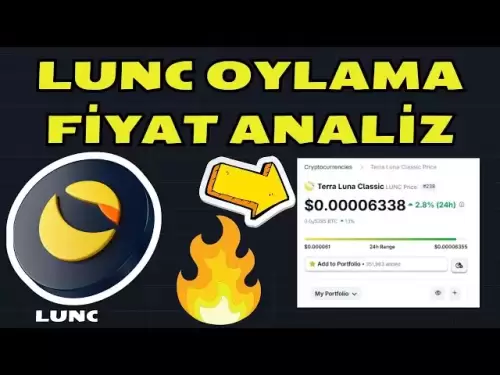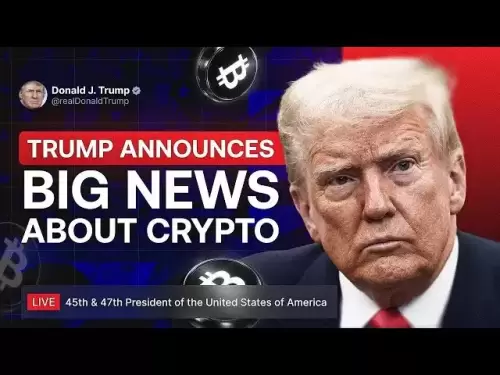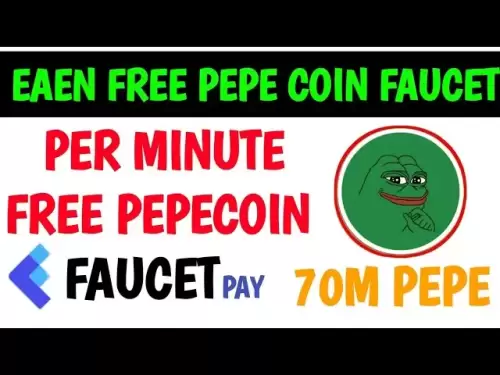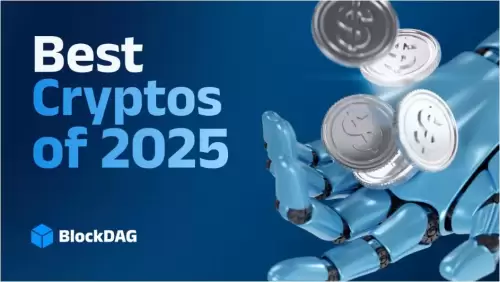 |
|
 |
|
 |
|
 |
|
 |
|
 |
|
 |
|
 |
|
 |
|
 |
|
 |
|
 |
|
 |
|
 |
|
 |
|
Cryptocurrency News Articles
Leemon Baird, the Inventor of Hashgraph, Explains How It Works as an Alternative to Blockchain Architectures
May 13, 2025 at 01:06 am

Leemon Baird, co-founder of Hedera Hashgraph, is no stranger to the world of technology. With a background in computer science and a career spanning both academia and industry, Baird is uniquely positioned to provide insights into the promise and potential of blockchain technology.
In a recent interview with CoinDesk, Baird discussed his journey developing hashgraph consensus, the technical limitations of earlier approaches that he was trying to address, and his vision for the future of blockchain and AI.
“I love computer science and the math side of it—inventing things and solving problems. When I became an entrepreneur 25 years ago, it was the same process,” Baird said.
“The core of what I always do is trying to understand the fundamental problem we're trying to solve. What is the real question? What are we really trying to accomplish? And then you build on that and solve that problem.”
Baird explained that he began working on hashgraph consensus in 2012, motivated by his interest in exploring new possibilities within the realm of mathematics.
“I started working on this in 2012 as one of many math problems I was exploring. Initially, I was convinced it couldn't be done. I'd pick up the problem, play with it, and convince myself it was impossible—over and over again,” Baird said.
“But in 2015, I realized that by throwing in two hashes, suddenly it all falls into place. You can have ultimate speed—essentially at the speed of the internet—while also having ultimate security with ABFT. And it's proof of stake, so you don't waste electricity.”
According to Baird, the problem he was trying to solve was how to create a consensus mechanism that could be both fast and secure. Existing mechanisms, such as Bitcoin's proof of work, were either slow or not fully asynchronous Byzantine fault tolerant (ABFT).
“I asked: Is it possible to achieve ABFT—the strongest kind of security—while also being super fast and not burning electricity or dumping carbon into the atmosphere?” Baird said.
Hashgraph, he explained, is able to achieve both speed and security because it uses a novel approach to consensus that is based on directed acyclic graphs (DAGs).
“This new structure allows for very rapid consensus times—on the order of a few seconds—while still maintaining the high levels of security that are essential for a trustless system of this magnitude,” Baird said.
Baird also emphasized the importance of governance in his decision to co-found Hedera.
“From a business perspective, the question was: what is the right way to govern this? When we look at blockchains, they often claim, ‘We won't have any governance. Anyone can help do it.’ But power over time can consolidate—you end up with a handful of developers or people behind the scenes controlling everything,” Baird said.
“We started differently. We made governance decentralized from the very beginning. We brought in some of the biggest organizations in the world—top universities and businesses spread globally that people trust and that have reputations to be upheld. They balance each other, creating checks and balances, and together they govern the system.”
According to Baird, this structure of governance is what allows Hedera to be trusted by such a wide range of organizations.
“It was about addressing the fundamental question: what do you really want in governance? What will give you true trustlessness, or at least a lower bar of trust needed to fully trust the system?” Baird said.
“That was our answer—approaching business questions with the same rigor as mathematical ones.”
In addition to its technical capabilities, Baird highlighted several use cases that are being developed on Hedera.
“We're seeing a lot of interesting use cases emerge, especially in the realm of real-world asset tokenization,” Baird said.
“For instance, we're tracking carbon emissions with Hyundai and Kia, and they're using this data to report on their progress towards sustainability goals.”
According to Baird, this capability is crucial for organizations that are subject to increasing pressure to reduce their carbon footprints.
“As large organizations like Hyundai and Kia deploy their products and services across the globe, they're generating massive amounts of data that needs to be stored, tracked, and ultimately reported on,” Baird said.
“This is where blockchain technology can play a vital role. By leveraging the immutable and transparent nature of blockchain, we can create a system of record for carbon emissions that is both reliable and verifiable.”
Baird also mentioned several other use cases that are being developed on Hedera, including stablecoins, AIs, and RWA tokenization.
“We've created a Stable Coin Studio to make developing and deploying stablecoins on Hedera seamless, and we're seeing great potential in this area, especially with the Hedera Council members, many of whom are financial institutions who are actively working on various stablecoin
Disclaimer:info@kdj.com
The information provided is not trading advice. kdj.com does not assume any responsibility for any investments made based on the information provided in this article. Cryptocurrencies are highly volatile and it is highly recommended that you invest with caution after thorough research!
If you believe that the content used on this website infringes your copyright, please contact us immediately (info@kdj.com) and we will delete it promptly.
-

-

-

-

-

-

-

- XRP Price Swings, Unilabs Listing Heats Up, and Utility Coins Take Center Stage: What's the Buzz?
- Jul 26, 2025 at 10:00 pm
- XRP faces volatility while Unilabs Finance gains traction with its AI-powered platform. Smart money chases utility, with Unilabs' presale success hinting at a shift in investor focus.
-

-





























































